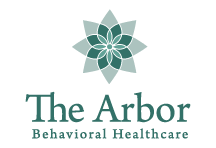An estimated three million Texans use illegal drugs, while one million also struggle with problematic alcohol consumption. As a consequence, more addictive substance-related deaths happen in Texas, percentage-wise. As the capital of Texas, Austin has the highest rate of these deaths, while El Paso has the lowest rate.1 This epidemic may be why finding opioid addiction treatment options or opioid rehab centers in Austin, TX is not so challenging.
The goal of rehab facilities in the city is not only to lower the rate of addictive substance-related deaths but also to provide professional help for Texans struggling with substance use disorders (SUDs) like opioid addiction. Because the U.S. is currently in the middle of an opioid epidemic, it makes sense that opioid addiction treatment programs are offered by most—if not all—rehab centers in Austin. Programs like this are often comprehensive and include assessment, diagnosis, and detox as initial stages before participants undergo further addiction treatment interventions. Contact The Arbor today by calling 844.413.2690 or reaching out to our team online.
What Are the Signs of Opioid Addiction?
Some people struggling with opioid addiction may still be able to maintain relationships, responsibilities, and routines. However, they may find it difficult to continue doing so over time, as SUD symptoms start to overwhelm their lives and even affect the lives of their loved ones.
- Common signs of an out-of-control opioid addiction include the following:
- Changing sleep patterns
- Doctor shopping or getting opioid prescriptions from multiple physicians
- Experiencing excessive mood swings
- Poor decision-making, including putting themselves and others in danger
- Taking opioids even when not in pain
- Taking opioids in ways that differ from prescription instructions
What Should You Expect from an Opioid Rehab Program?
An opioid addiction rehab center provides comprehensive and consistent treatment programs for clients working toward managing their SUD by themselves while living happy, productive, and sober lives.
Like all addiction treatment programs, an opioid rehab program helps clients progress through recovery gradually. Clients should remember that the recovery path is long, has multiple stages, and that addiction treatment is not a cure. They will need to manage their opioid addiction for the rest of their lives and maintain sobriety with the help of robust support systems and healthy coping mechanisms.
Many opioid rehab centers offer the full continuum of care and often create customized addiction treatment programs for each client. However, most opioid rehab programs have clients go through the following stages:
- Assessment – This is often the first stage, although sometimes detoxification comes before it. The medical staff may conduct interviews with clients and their family members, physically assess clients and go through their medical records. All of this helps evaluate and diagnose clients and recommend ideal but customized treatment programs for them.
- Detoxification – Most rehab experts recommend medical detox because some opioid withdrawal symptoms can be discomforting and even life-threatening. Many addiction treatment interventions also require clients to be sober, so detoxification is exhausting and essential. This stage doesn’t end until clients’ physical and psychological health are stable after they experience withdrawal symptoms.
- Orientation – Before starting further addiction treatment, some rehab facilities introduce clients to their community and culture. They may also take steps to educate clients about opioid addiction and the typical interventions for it. Orientation may also include discussing clients’ rights, responsibilities, and confidentiality laws that may apply to their situation.
- Addiction treatment – This stage primarily includes psychotherapy and alternative or complementary and alternative medicine (CAM) approaches to care. It may even include medication-assisted treatment (MAT) that uses FDA-approved prescription medication like buprenorphine, methadone, and naltrexone.
- Aftercare planning – Many rehab centers provide alumni programs and aftercare services to clients who graduate from their opioid addiction treatment programs. Aftercare services can include financial literacy education, job placement, and ongoing one-on-one psychotherapy sessions.
When Should You Consider an Opioid Addiction Treatment Program?
When someone struggles with long-term opioid addiction, they experience a slowdown in the body’s production of endorphins. This slowdown is a sign of tolerance and means they need to take more opioids per dose to trigger the pleasurable feelings instrumental in developing their addiction. Tolerance to opioids may eventually lead to an overdose, which can be fatal. Long-term opioid addiction can also expose someone to opioid batches laced with contaminants that can further affect physical health. If someone takes opioids through injection or is prone to risky behavior while under the influence, they are more likely to be infected with HIV and other diseases.
The bottom line is that if you or someone you care about is struggling with opioid addiction, there is no better next step than seeking professional help to overcome it.
Ready to Learn More About The Arbor Behavioral Healthcare’s Opioid Rehab Center in Austin, TX?
If you’re looking for opioid addiction treatment or rehab program in Austin, TX, reach out to The Arbor today. Call 844.413.2690 or contact our team online.


